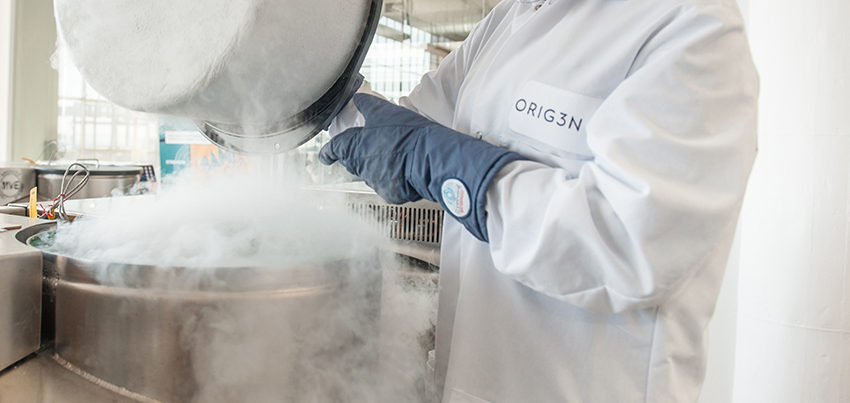The World’s Largest Cell Bank for Regenerative Medicine, Explained

You may have heard about Orig3n’s on-site lab and wondered what it is we do here. Or perhaps, you’re not quite sure about the difference between Orig3n DNA tests and our cell bank.
Well, you’ve come to the right place. Here’s the world’s largest cell bank for regenerative medicine — explained.
At Orig3n, we do two things. We sell lifestyle DNA tests to people just like you so you can learn more about your genetic blueprint and be empowered to take charge of your health. We also work hard each and every day to advance regenerative medicine and bring cell therapies to life to help treat diseases. These two separate parts of Orig3n are connected through our core mission to personalize the future of health. Plus, the proceeds of Orig3n’s health and wellness DNA tests help fund and support our research – so, for those of you have purchased our products, thank you for helping us revolutionize health with your purchase!
How did you grow the cell bank?
Since 2014, we’ve been growing our cell bank by traveling to hundreds of events across the country. At marathons, races, sporting events, and conventions, we meet all kinds of people who choose to donate a teaspoon of blood to our research. We welcome samples from people who are healthy and people with diseases. Blood samples from healthy people will be used for our cell therapy programs while samples from people with diseases will help us understand these diseases better and help end the era of trial-and-error-based medicine – so that we can choose the treatments that have the best chance of success.
When we collect blood samples at these events, they come directly back to our on-site research lab in Boston, where we process the samples and add them to the world’s largest cell bank.
What’s in the cell bank?
Inside our cell bank, we have thousands of induced pluripotent stem cells, made from adult blood cells from donors. These iPSCs are used for our regenerative medicine research as we work to develop cell therapies.
What are iPSCs?
Once we collect blood samples and bring them back to our lab, we process them and turn them into induced pluripotent stem cells. IPSCs were first created by a Japanese scientist Shinya Yamanaka. In 2006, he discovered how to turn blood or skin cells back into cells similar to embryonic stem cells. IPSCs are stem cells that can subsequently be turned into virtually any other type of cell — heart cells, liver cells, brain cells, and more. (Read about them here.) These cells can then be used for treatment. For his discovery, Mr. Yamanaka was awarded the Nobel Prize in 2012.
Using Mr. Yamanaka’s same reprogramming factors, we turn blood cells into iPSCs at our very own lab in Boston. With these iPSCs, we’re conducting research in the hopes that we can use these stem cells to repair and regenerate organs and tissues. While we’re still early in our research, the potential is tremendous. In 2016, we announced that our cell bank is HLA-matched to 90% of the U.S. population, which means that we can provide cells for most of the U.S. population without rejection from the patient’s immune system. This may someday have huge implications for our cell therapies to succeed in treating people.
Here at Orig3n, we consider ourselves custodians of a valuable biological asset and that’s a responsibility we don’t take lightly. We’re working towards ending trial and error medicine because we believe we can all do better to improve health — and every day, we’re one step closer.